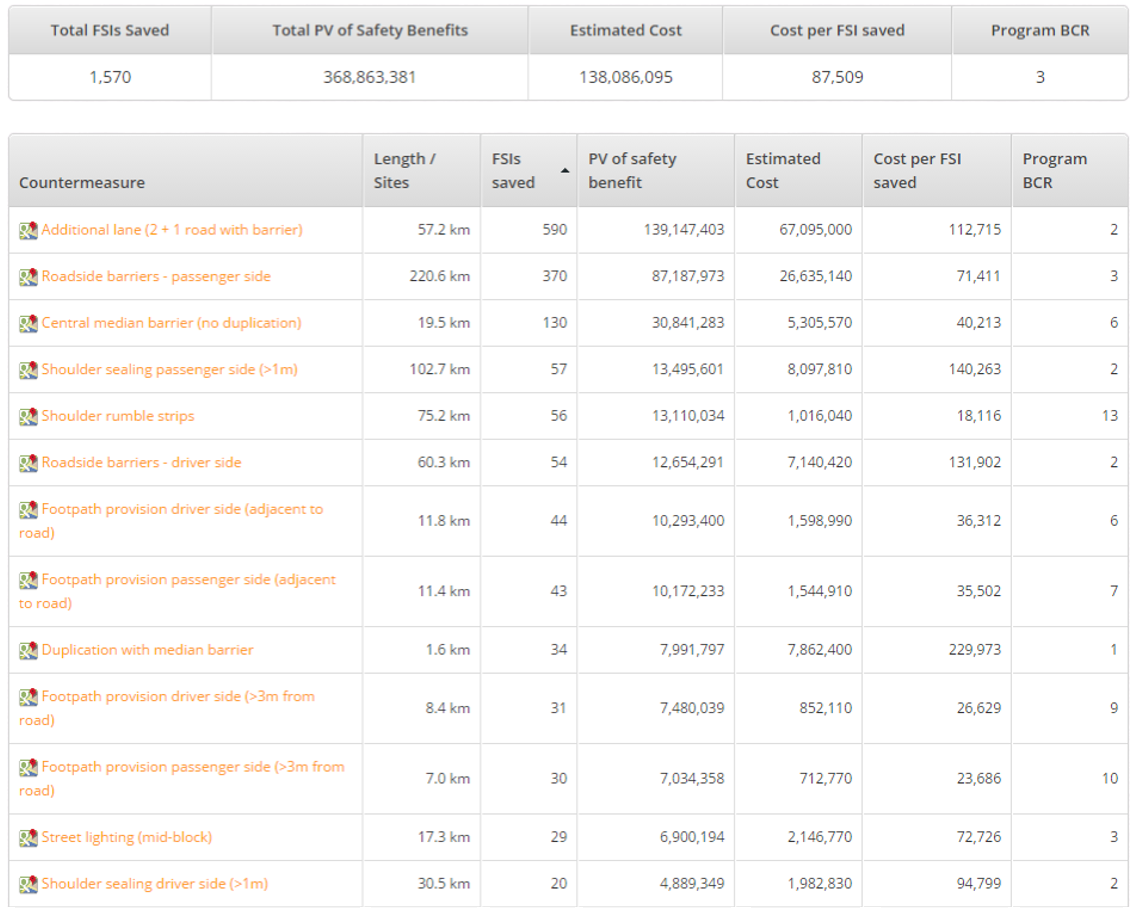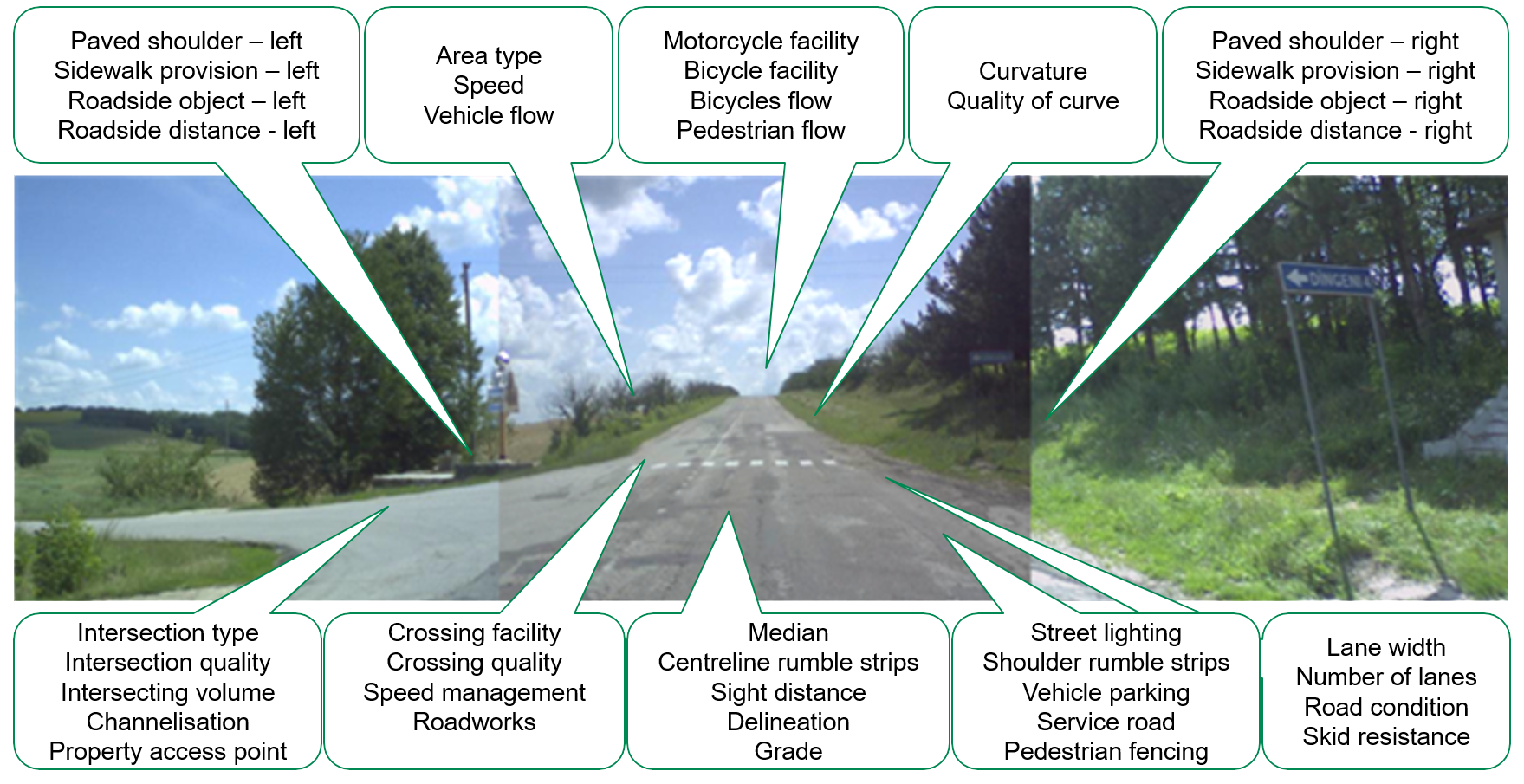Including Star Rating Targets in the Tender Process
Including star-rating targets in the tender process raises the competitive bar among design teams. The open-ended ‘or better’ target invites designers to aspire to higher performance. A 4.5 star outcome can be given more weighting than a 3.5 star outcome for a very small percentage of the overall project costs.
Project evaluation criteria can therefore include the safety performance of a road in addition to traditional criteria like cost, time and quality. The star ratings and associated estimate of life-time crash costs associated with each design can provide an objective, evidence based, global standard that can be used in evaluation criteria. Refer to our simple tables below as a template for action.
For example tenderers could be ranked by their performance across all of the criteria and/or the costs of road trauma expected in their design could be included in the price evaluation. For example:
| Criteria | Tenderer 1 | Tenderer 2 | Tenderer 3 |
| Safety Performance | 2.8 Star | 4.1 Star | 3.7 Star |
| Safety Benefit (A) | $6 Million | $81 Million | $65 Million |
| Cost (B) | $112 Million | $125 Million | $123 Million |
| Total Cost (B – A) | $106 Million | $44 Million | $58 Million |
| Ranking | 3 | 1 | 2 |
From a whole of government perspective, and for commissioning bodies making a long-term investment in roads and subsequent infrastructure maintenance, there is a powerful argument to pay for better and safer infrastructure at the outset instead of retrofitting at greater cost in coming years.
Safer roads will pay for themselves!

















